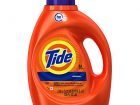Last night I was able to lift my head up and take a needed break from working on my books and other projects. I made the short journey to downtown San Diego to finally catch up with old friends Steve Farber and Shawn Ellis. While Steve is local, Shawn is in San Diego for the annual IASB (International Association of Speakers Bureaus) conference, which is celebrating its 25th anniversary.
I suggested we meet in downtown San Diego’s at Searsucker’s, Top Chef finalist Brian Malarky’s new restaurant (opened in July 2010) located in the infamous GasLamp District. I would love to go into detail how we enjoyed the duck fat fries or how our server opted us out of the Farm Bird Lollipops with snake oil and bleu fondue in favor of the lost abbey short ribs with fried onions (all very delicious, by the way) but I wanted to share my thoughts on restaurant corkage policies, Searsucker’s and other’s treatment of diners who bring their own wine.
The corkage policy at Searsuckers is simple: buy a bottle of wine off its list and corkage is waived on the diner’s bottle of wine. If not, the corkage is a hefty $25. As I scanned the wine list and noted a number of wines in the sub $50 category, but all pushing the limits on markup, including a Spanish Albariño for $42 that I can buy at a local wine shop for about $15. Pricing aside, Searsucker’s modest but diverse wine list does offer diners a choice. With nothing screaming “try me”, we decided to stick with the 2001 Pride Mountain Vineyards Cabernet Sauvignon I brought to celebrate our evening get together.
I understand the need for restaurants to charge a corkage fee, and I fully expect to pay for the privilege of bringing my wine into a restaurant and using their stemware. I know that alcohol is a huge profit center and helps pay for the non tangibles diners get from fine dining. But in this economy where filling tables (more “covers” as it’s called in the business), more and more restaurants have adopted more liberal wine corkage policies.
 In our nation’s capital Charlie Palmer’s Steak restaurant, in the shadow of the capital building, features wines made from every state in the union—yes, even Alaska. Even so, if anyone wishes to bring their own wine, as long as it’s bottled domestically, there is no corkage. Bring in a Bordeaux or Barolo or any wine made outside the United States, you’re going to pay $25 corkage. At Pinot Provence in Costa Mesa, California there is no corkage fee whatsoever. Bring in one, two or ten bottles and you won’t be charged a penny. This contrasts with Vine in San Clemente where I was stunned to discover that the corkage is not only $20, but diners are limited to two bottles. With reservations for a party of 8, all wine collectors, we were told there was absolutely no flexibility to this policy. Shame on you, Vine. We packed up and left.
In our nation’s capital Charlie Palmer’s Steak restaurant, in the shadow of the capital building, features wines made from every state in the union—yes, even Alaska. Even so, if anyone wishes to bring their own wine, as long as it’s bottled domestically, there is no corkage. Bring in a Bordeaux or Barolo or any wine made outside the United States, you’re going to pay $25 corkage. At Pinot Provence in Costa Mesa, California there is no corkage fee whatsoever. Bring in one, two or ten bottles and you won’t be charged a penny. This contrasts with Vine in San Clemente where I was stunned to discover that the corkage is not only $20, but diners are limited to two bottles. With reservations for a party of 8, all wine collectors, we were told there was absolutely no flexibility to this policy. Shame on you, Vine. We packed up and left.
At 3rd Corner in Encinitas (also in Palm Desert and Ocean Beach) the simple but comfortable bistro also serves as a wine shop. Even better, the wines are discounted, often below standard retail price. Want to enjoy a bottle with dinner? Simply pay $5 over the retail price of that wine. So that $42 Albariño I found on the list at Seaersucker would cost about $20 at 3rd Corner. It’s not well known, but in most cases restaurants can buy wine at lower wholesale prices than a typical retailer. This makes the excessive markup most restaurants use even more disturbing. Have you noticed some restaurants will make one night a week (usually Tuesday) half-price wine day? Dine that night in the restaurant and any bottle on the list is 50% off. To be sure the restaurant is making the standard retail markup on that bottle of wine. Take into account the pricing of many restaurant wine-by-the-glass program and you’re head will spin.
I’ve never brought a bottle of my own wine into 3rd Corner. With reasonable priced wines and an interesting and ecletic selection, it makes no sense. I can try something new and different or tried and true. Not that the reason I bring wines to restaurants is for cost savings. This is far from the truth. Most of the wines in my cellar can’t be found on wine lists. And many restaurant wine lists are far from inspiring. I’d rather bring my own wine and share tastes of it with my server and the chef—which I always do. Wine is for sharing.
In the state of Washington, the legislature just passed House Bill 1227, perhaps the most innovative legislation regarding wine and corkage in the county, which allows domestic wineries to enter into an agreement with a restaurant to waive corkage fees on its wines. The city of Yakima had initiated a corkage free zone—this meant that anyone bringing in a wine purchased a local winery in the Walla Walla Valley would not be charged corkage when dining at a local restaurant. This stimulates business for both the winery and the restaurant. This policy was temporally shut down by the State Liquor Control Board in January this year, but thanks to the state legislature, a new law has been passed which is now waiting for the governor’s signature.
Restaurant Wine Corkage Policy?
If more the restaurants would approach its wine lists and pricing and corkage policies with more innovative thinking, they just might find that not only would nightly covers (customers) increase, but the average sale per cover would increase and they’d likely see more wine sales. Though if a restaurant is highly regarded and has earned coveted Michelin stars, it can command what ever wine corkage fee or set a questionable wine corkage policy without fear—even a no outside wine policy as this update on New York City restaurants in New York Magazine shows.
What about you? What is your experience with wine corkage policies and fees? What is the wine corkage policy at your favorite restaurant?Share your thoughts and comment on this post.





